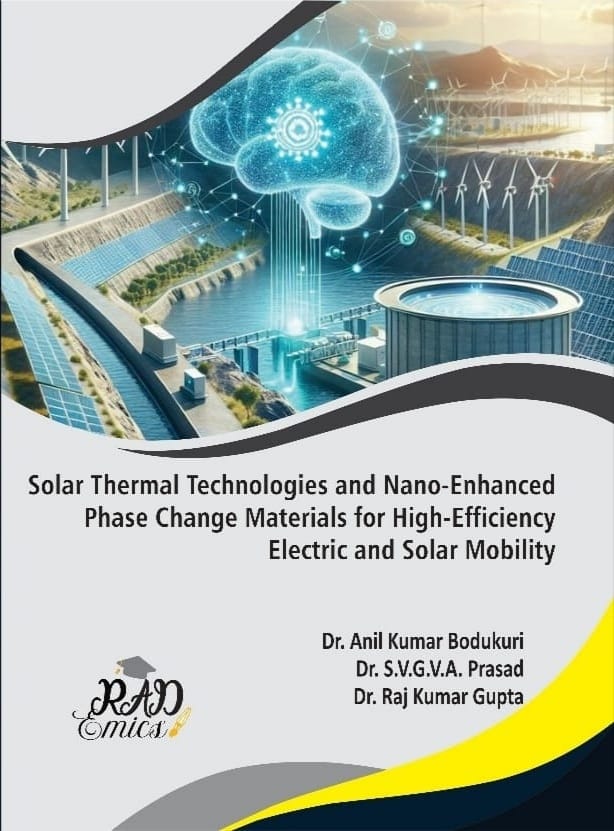
Peer Reviewed Chapter
Chapter Name : Thermophysical and Chemical Properties of Nano-Additives in Phase Change Materials for Enhanced Heat Transfer
Author Name : Padmavathi Vustelamuri, Rajesh S. Hajare
Copyright: @2025 | Pages: 35
DOI: 10.71443/9789349552654-03
Received: WU Accepted: WU Published: WU
Abstract
The enhancement of phase change materials (PCMs) through the incorporation of nano-additives presents a promising approach to overcome intrinsic limitations in thermal conductivity and energy storage capacity, thereby advancing thermal management technologies. This chapter provides a comprehensive analysis of the thermophysical and chemical properties of various nanoparticles and their synergistic interactions within PCM matrices. Emphasis is placed on the role of nanoparticle morphology, size distribution, and surface functionalization in optimizing heat transfer efficiency and phase transition dynamics. The critical evaluation of nanoparticle dispersion stability and long-term performance under cyclic thermal conditions is discussed. Environmental and safety considerations, alongside evolving regulatory frameworks, are examined to address the sustainable integration of nano-enhanced PCMs into practical applications. The chapter also highlights emerging algorithmic and pedagogical strategies to monitor, manage, and mitigate potential ecological and occupational risks. By bridging material science, environmental stewardship, and policy development, this work establishes a holistic foundation for the future design and deployment of nano-engineered PCMs. The findings underscore the transformative potential of nanotechnology in achieving superior thermal energy storage solutions essential for renewable energy systems, electronic cooling, and climate control applications.
Introduction
Phase change materials (PCMs) have gained considerable attention as efficient thermal energy storage media due to their ability to store and release latent heat during phase transitions [1]. These materials are widely employed in diverse fields such as renewable energy systems, electronics cooling, building temperature regulation, and industrial waste heat recovery [2]. Thepractical application of PCMs is often hindered by their inherently low thermal conductivity, which limits the rate of heat transfer and thus affects overall system efficiency. Enhancing the heat transfer performance of PCMs is crucial to meet the increasing demands for rapid thermal management and energy conservation in modern technologies [3]. Among various strategies, the addition of nano-sized additives into PCMs has emerged as an innovative and effective approach to improve thermal conductivity without compromising the latent heat storage capacity [4]. The unique size-dependent properties of nanoparticles enable enhanced heat transfer through mechanisms that differ significantly from conventional micro or macro-sized additives, making them ideal candidates for next-generation thermal management solutions [5].
Nano-additives such as metallic nanoparticles (e.g., copper, silver, aluminum), metal oxides (e.g., titanium dioxide, zinc oxide) [6], and carbon-based nanomaterials (e.g., graphene, carbon nanotubes) exhibit distinct thermophysical and chemical characteristics that influence their interaction with PCM matrices [7]. These nano-additives not only improve thermal conductivity but also impact other important properties such as melting point, phase change enthalpy, and supercooling behavior [8]. The shape, size, concentration, and surface chemistry of nanoparticles play a crucial role in determining their dispersion stability and interfacial compatibility within the PCM [9]. Achieving a homogenous and stable distribution of nanoparticles is essential to prevent agglomeration, which can deteriorate thermal performance and reliability. The surface functionalization techniques are often employed to enhance compatibility between nanoparticles and the PCM matrix, ensuring long-term stability and consistent heat transfer properties during multiple thermal cycles [10].